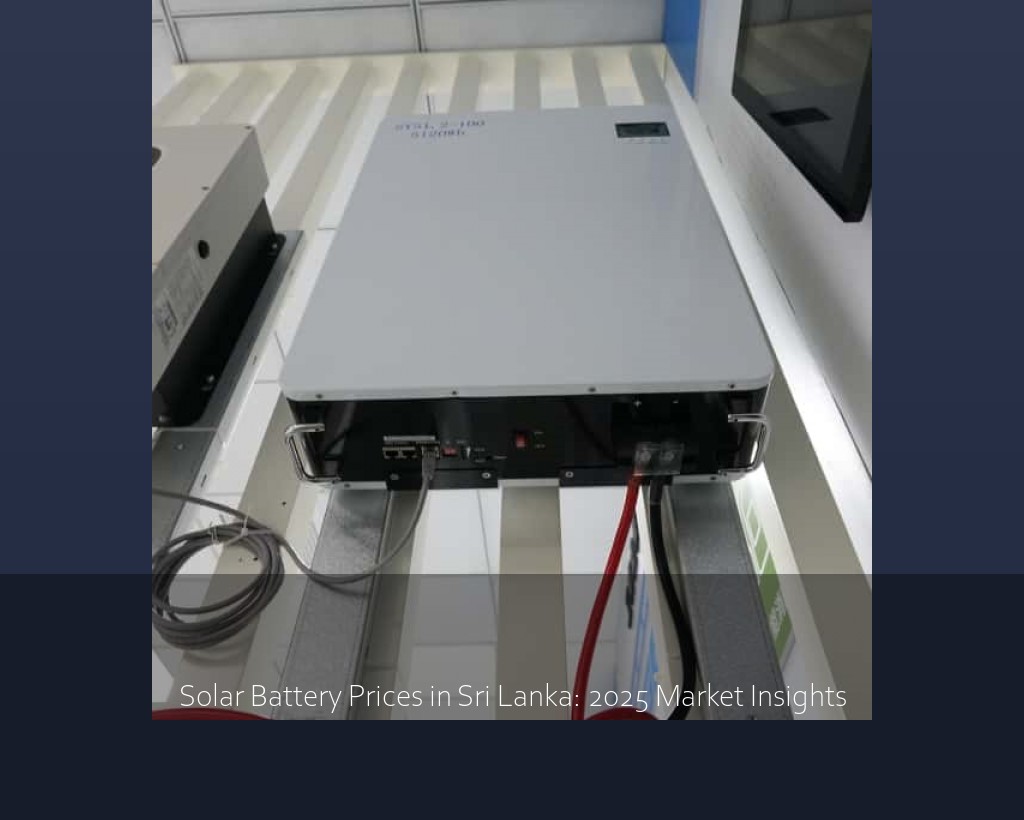Solar Lithium Battery Prices in Morocco: 2025 Market Insights
Morocco imports over 90% of its fossil fuels, spending billions annually to power homes and industries. But here’s the kicker: the country gets 3,000 hours of sunlight yearly—enough to theoretically power all of Africa. So why aren’t more households tapping into solar lithium batteries? The answer lies in upfront costs and awareness gaps.
Solar Lithium Battery Prices in Morocco: 2025 Market Insights

Table of Contents
Morocco’s Energy Crisis and Solar Shift
Morocco imports over 90% of its fossil fuels, spending billions annually to power homes and industries. But here’s the kicker: the country gets 3,000 hours of sunlight yearly—enough to theoretically power all of Africa. So why aren’t more households tapping into solar lithium batteries? The answer lies in upfront costs and awareness gaps.
Wait, no—actually, things are changing. The government’s 2030 Renewable Energy Plan aims to generate 52% of electricity from solar and wind. Solar panels are now common in Marrakech rooftops, but lithium-ion storage systems remain a mystery to many. Let’s break down the numbers: a 5kW solar + battery setup costs between MAD 45,000–65,000 (≈$4,500–6,500), which sounds steep until you factor in 25-year lifespans and near-zero grid bills.
2025 Price Trends: What’s Driving Costs?
Lithium battery prices in Morocco dropped 18% since 2022, thanks to local assembly plants and tax incentives. But here’s the catch: installation fees still eat up 30% of budgets. Why? Skilled technicians are scarce outside Casablanca and Rabat. A recent study showed that households in Agadir pay 22% more for labor compared to Tangier—a gap that’s narrowing as vocational training expands.
Let’s talk raw materials. Cobalt prices fluctuated wildly in Q1 2025, causing a MAD 3,000–5,000 swing in system costs. But Morocco’s new lithium recycling initiative could stabilize this. by 2026, recycled batteries might cover 15% of domestic demand, trimming prices by another 10–12%.
Lithium Solar Storage: Beyond the Hype
You’ve heard the buzzwords—“smart BESS” (Battery Energy Storage Systems) and “peak shaving.” But what do they mean for a family in Fez? Imagine storing cheap solar power during the day to avoid buying expensive grid electricity at night. A typical 10kWh system can save MAD 1,200/month—paying for itself in 4–7 years. Not bad, right?
Well, there’s a catch. Lithium batteries degrade faster in Morocco’s Saharan heat. One user in Ouarzazate reported 8% capacity loss after two years—higher than the 5% global average. The fix? Look for batteries with active cooling systems, even if they cost 10–15% more upfront. Trust me, it’s worth avoiding replacements down the line.
Real-World Success: Casablanca’s Solar Project
In February 2025, MUST Energy (Guangdong) deployed 500 residential lithium storage units in Casablanca’s Hay Hassani district. The results? Households slashed energy bills by 60–80%, and blackouts during heatwaves vanished. “We’re not just selling batteries,” said project lead Amina El Fassi. “We’re selling energy independence.”
How to Choose the Right System
Follow this checklist to avoid overspending:
- Check certifications (IEC 62619 for safety, UL 9540 for performance)
- Compare warranty terms (aim for 10+ years)
- Ask about after-sales service—can they fix issues in 48 hours?
Still unsure? Think long-term. A MAD 60,000 system might seem pricey today, but with electricity tariffs rising 6% annually, your break-even point gets closer every year. And hey, isn’t energy security priceless when the next heatwave hits?
Morocco’s solar lithium battery market isn’t perfect—supply chain hiccups and skill shortages persist. But with prices falling and awareness rising, 2025 could be the year storage goes mainstream. The question isn’t “Can I afford it?” but “Can I afford to wait?”
Related Contents

Solar Battery Prices in Sri Lanka: 2025 Market Insights
You know those viral posts about solar battery price drops? Well, Sri Lanka's market isn't quite following global trends. While lithium-ion costs decreased 18% worldwide in 2024, local prices here only dipped 7% according to Energy Ministry reports. Why the discrepancy?

Solar Panel Battery Prices in Pakistan: 2025 Market Insights & Solutions
Ever wondered why solar battery prices in Karachi differ 30% from those in Islamabad? The answer lies in three key factors: import taxes, local demand surges, and what I'd call "voltage confusion syndrome."

10kWh Lithium Battery Prices in Nigeria: 2025 Market Insights
As of March 2025, 10kWh lithium battery systems in Nigeria range between $3,800-$5,200 USD. But wait—why does the price tag for the same capacity vary by over 30%? The answer lies in three critical factors:

Solar Battery Prices in the Philippines: 2024 Market Trends and Smart Buying Guide
With electricity rates soaring to ₱11-₱15 per kWh in Metro Manila solar batteries have become essential for 68% of Filipino households adopting solar systems. The recent BATTERY Show Philippines 2024 revealed explosive 40% annual growth in energy storage installations, driven by frequent power outages and new net metering policies.

10kW Solar Inverter Prices in Pakistan: 2025 Market Insights & Buying Guide
Let's cut to the chase - a decent 10kW solar inverter in Pakistan currently ranges between $800 to $1,800. But wait, why such a huge price gap? Well, it's sort of like buying a car - you've got budget models and luxury versions. Chinese brands like Huijue Solar offer entry-level hybrids at $800-$1,200, while European tech might cost you $1,500-$1,800.
